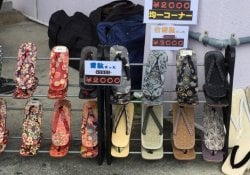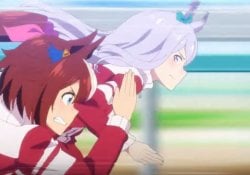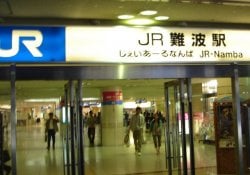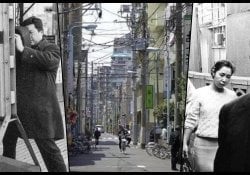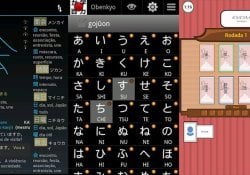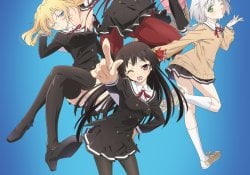When it comes to diplomacy, Brazil and Japan they have maintained good relations with each other since the early 1950s, when dialogue between the two nations resumed. Currently, the two countries have a very positive economic and cultural exchange and both are part of the G20.
It is also worth noting that Brazil and Japan signed a friendship treaty in 1895, but as a result of the events provoked by the Second World War, the good relationship between the two countries cooled down, until it began to improve again after 1951.
Thus, since the government of General Geisel (late 70s), many Brazilian heads of state have been in japanese territory, whether to fulfill an agenda or discuss agreements.
In this article, we will learn about the Tupiniquin representatives who visited Japan and how their respective stays took place.
Addendum: This article is not intended to express support for any politician. Here, I only seek to inform and disseminate about the elements that involve the rich diplomatic history between Brazil and Japan.
Índice de Conteúdo
Visit of Fernando Collor (1990)
In the early 1990s, it was the turn of Fernando Collor de Melo (1990-1992), the first president elected by popular vote after the dictatorship, to visit the japanese lands. On the occasion, Collor participated in the enthronement ceremony of the new Emperor Akihito. In the video below, you can see Collor exercising in Japanese territory and later meeting with authorities.
One of the main themes of the meeting was related to the inclusion of five countries in the UN Security Council, including Brazil and Japan.
An extremely curious fact about the ex-president's visit is that he met a few times with Antonio Inoki, a famous ex-president.fighter Japanese. In addition, Collor was a practitioner of Karate, having exhibited his martial art skills at the Japanese Karate Association.

Another point of connection between Collor and Japan was the fact that the president encouraged the car import, video games and computers, a fact that considerably increased the influence of Japanese culture on Brazilian industry, especially in relation to technology.
The Super Nintendo (known as “Super Famicom, スパーファミコン” in Japan), for example, which was launched in 1990 in Japan, only came to Brazil in 1993, a few months after the end of the term (impeachment) of the then Brazilian president. . The import of electronics grew considerably after this period.
Visit of Fernando Henrique Cardoso (1996)
In March 1996, it was Fernando Henrique Cardoso's turn to visit the land where the sun rises. One year earlier, in 1995, one hundred years had passed since the signing of the friendship treaty (Treaty of Commerce, Friendship and Navigation) between the two nations. In 1996, that is, a year before the Asian Crisis (1997), FHC received an invitation from the Japanese government to visit the country.

During his stay of just 4 days, FHC was accompanied by an extensive entourage of politicians of Japanese descent and personalities linked to Japan. Among these personalities present in the entourage was the former Kashima Antlers player Zico, hailed by the Japanese as the "God of Football" (サッカーの神, sakka no kami).
As a result of FHC's visit that year, financing agreements were discussed for several Brazilian works, such as projects for the construction of wind farms, as well as environmental improvements and basic sanitation in several regions.
In the year following FHC's visit to the Japanese (1996), it was the turn of the then Emperor Akihito and Empress Michiko to visit Brazil, in 1997. That same year (1997) an agreement was reached that resulted in the famous Kyoto Protocol, which aims to reduce the emission of greenhouse gases.
In the case of FHC's visit, in particular, it is possible to find extensive documentation, with photos, reports and newspaper articles dealing with the subject.
Lula's Visit (2005)
Luiz Inácio Lula da Silva (2003-2010) visited Japan in May 2005.
During this period, Lula visited two Asian countries: South Korea and Japan. On the occasion, he met with the then Japanese Prime Minister, a position held at the time by Junichiro Koizumi.
One of the objectives of the trip was to discuss agreements in the field of fuels, especially ethanol and biofuels in general.
In the entourage that accompanied the former president, there was also the Brazilian cousin of the Japanese prime minister, Mr. Kenji Iryo.
The article is still halfway through, but we recommend also reading:
Visit of Temer (2016)
In October 2016, Michel Temer was another head of government (and state) to step on Japanese ground. On that occasion, Temer talked for more than half an hour with the then Emperor Akihito. In addition to meeting with Akihito, the former president also spoke with the then prime minister Shinzo Abe, with Brazilian businessmen residing in Japan and with the Minister of Finance.
After more than 11 years without the visit of a Brazilian head of state, the Japanese finally had the opportunity to continue the diplomatic, social and economic alignment they had been having for a long time with Brazil. During Temer's visit, agreements were signed on cooperation in infrastructure works and projects.
Bolsonaro's Visit (2019)
More recently, in 2019, the current President of the Republic Jair Bolsonaro participated in the enthronement ceremony of the Emperor Naruto, a fact that inaugurated the call Reiwa era (令和). During his visit, Bolsonaro even stated that “Participating in the enthronement ceremony is a reason for satisfaction and pride. We have a lot of respect and consideration for the Japanese people.”
Conclusion and policy analysis
Finally, it is important to emphasize that each country has its own forms and systems of government. Japan is a constitutional monarchy, in which the Emperor is a predominantly diplomatic, symbolic, and hereditary figure. In addition to the Emperor, the country is politically led by the Prime Minister and an elected parliament.
The Japanese parliament, in the language used by other nations, is usually called the “Diet”, and consists precisely of two legislative houses, which are: The House of Representatives (Lower House) and the House of Counselors (Upper House).
In Brazil, on the other hand, we have a Presidential system of government, that is, where the figure of the President exists. The President, in turn, is considered both head of state and head of government, being responsible for tasks in the diplomatic-symbolic sphere and also in the governmental, political and executive spheres. In a Presidential regime, the figure of the President is subject to constant changes (every 4 years) and to the rigid control of his actions by parliament and society. Regarding the form of government, we have that Brazil consists of a Federative Republic.
In this sense, it is evident that Brazil and Japan have different political contexts. Such disparate contexts were influenced not only by events or economic differences, but above all by historical, colonial, territorial, religious and cultural factors that make each nation unique and its way of governing its laws and policies.
Liked? So comment, like and share!

